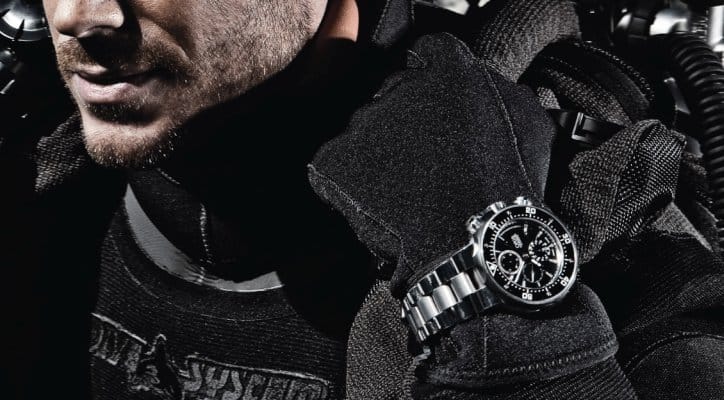
Summer is in full swing and people are flocking to the seaside to swim, dive, and have fun. And some are still not sure what kind of diving watch should they choose before going underwater. In this small overview, we at WorldWatchReview.com try to find an ideal ‘real’ diving tool for our readers covering both the “affordable” and “premium” categories of mechanical divers.
What is the summer for you? To me, this is an almost perfect time to get some energy before the next winter strikes. In our latitude, it lasts from the second half of May till the second decade of August, when days get progressively shorter and rains are too cold to run barefoot in the puddles. So, here we have basically around 100 days to recharge our batteries before another long and cold and dirty and slushy Autumn-Winter-Spring season.
The best way to speed up the process is to get your bags, buy a plane ticket and move south to the nearest sea resort. Whether it is Turkey or Montenegro or Spain or even Israel with its famous Dead Sea, there is one thing common for these places: there are plenty of opportunities to ruin your “daily driver,” whether it is a solid-gold Jaeger-LeCoultre or a stainless steel Tissot. Whatever their official water resistance rating is, regular watches –both mechanical and those powered by quartz movements– do not like daily exposure to salty sea water, hot sun, and abrasive beach sand.
It is clear, that, along with a set of diving gear and/or a trendy swimsuit, you also need to get yourself a quality diving tool that will be able to withstand the abuse a timepiece is subject to when an excited owner is looking for troubles in the water.
First things first.
If you are into real diving, you don’t want to waste your money on premium “divers” created by luxury watchmakers. Whether it is a Blancpain 500 Fathoms or an IWC Aquatimer, or a Breitling SuperOcean, or, God forbid, a Rolex Submariner, you don’t need it, however “professional” it looks on a well-photoshopped (or even 3D-modelled from scratch) images that you may encounter in this blog or in a glossy magazine.
If you don’t want to find yourself without oxygen deep underwater, you don’t have to spend around three to five thousand dollars on a product made by a “premium” brand only because it looks cool and is made in Switzerland.
All you need is a diving computer like the Suunto D9 (around $1500) or D6 (less than $1000) and an inexpensive (well below $500) Japanese watch with either automatic or quartz movement (Seiko Black&Black Monster SZEN002 is my personal favorite in this range) with a similar depth rating, just to make sure. The rest of the money will be better spent on more reliable diving equipment.
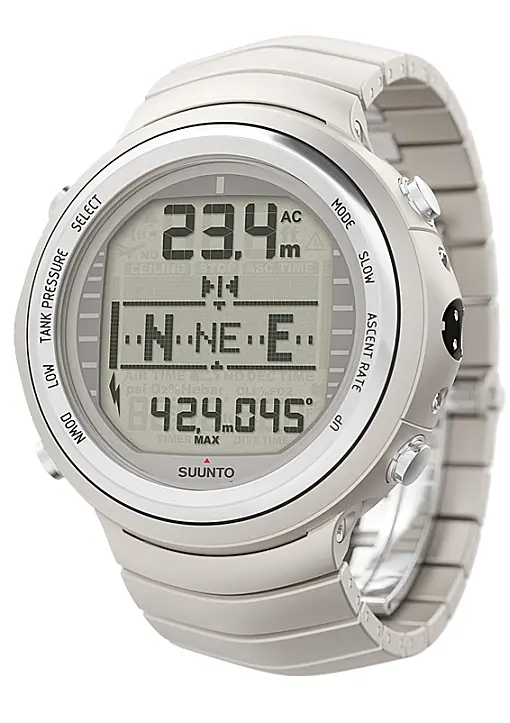
When buying yourself a diving (or, actually, any) timepiece, one should always pay attention to the five main components of any time measuring device. Namely,
1. Movement Type. It can be either high-grade quartz or a mechanical caliber with or without a self-winding mechanism. The choice is an esthetic one, provided that you have a real diving computer on your right wrist.
2. Case Material. There are plenty of choices here, but the most popular are stainless steel or high-grade titanium. The s/s versions may be delivered with different kinds of decoration, such as PVD or gold plating, but I would recommend sticking to the plain stainless steel or titanium models because any kind of plating (if it is not a DLC treatment, which is quite expensive) will be prone to scratches.
3. Type of Time Representation. Although quartz and mechanical mechanisms in most cases are supplied with analog displays, there are also several models sporting hybrid analog/digital displays. The extra LCD/LED display, which is usually located in the lower part of the dial, usually displays time in HH:MM:SS format, but can also be used as a second time-zone indicator, alarm, chronograph, countdown timer, etc.
4. Band Material. In this case, if you plan to use it as a diving tool, the choice is limited to stainless steel and titanium bracelets, as well as rubber, silicone, or urethane.
And finally,
5. Crystal. Most affordable Japanese watches come with different types of mineral glass, which is more prone to scratches but is also harder to break. The Swiss brands more often employ sapphire crystals, often with anti-glare treatment. If you are buying a workhorse, a mineral glass will do for all things practical.
Top 20 Affordable Diving Watches recommended by WorldWatchReview.com:
1. Seiko Prospecs Scuba Automatic 200m 6R15, ref. SBDC001, SBDC003 and so on (aka SUMO): $600-$1200
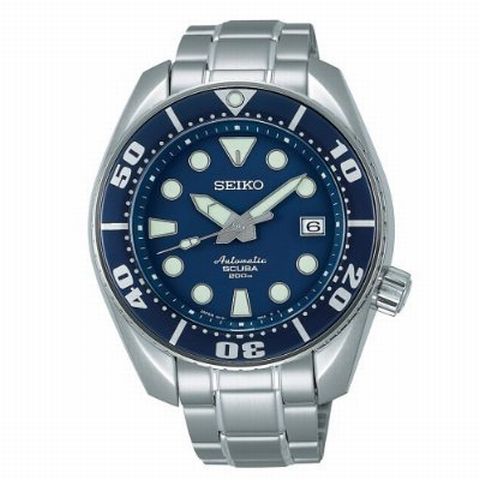
The Scuba is powered by a time-proven cal. 6R15 automatic movement. This mid-range caliber is built on 23 jewels and has an auxiliary manual winding system with a hacking second hand for time synchronization. Sumo’s hour and minute hands are a little bit too fat if you plan to limit its use to desk diving, otherwise, the size is just great to put as much luminescent substance as possible. This model is strictly JDM, so you will have to search for it on auction sites like eBay.
2. Orient Men’s Mako Automatic 200m Scuba CEM650: $160 MSRP
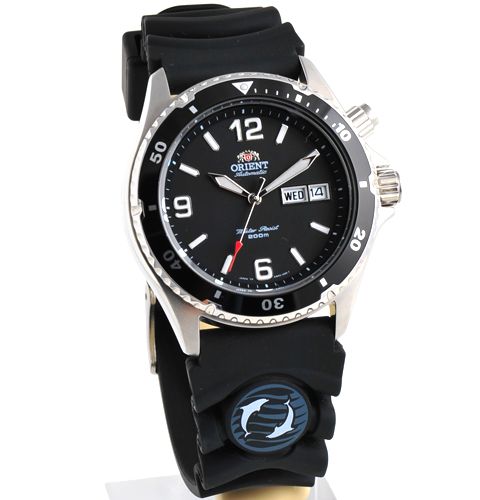
A classy and stylish tool for both serious divers and newbies. I especially like the black CEM65004B model, although its PVD case is prone to occasional scratches. Available in the U.S. at only $160, the CEM65004B is coming on a black urethane band and sports a balanced dial layout.
The whole family is powered by Orient Caliber 46943 automatic movement that comes without any noticeable decoration (which is not a problem at all since the Mako is sold with a solid stainless steel case back) and lacks the manual winding capability. The movement is built on 23 jewels, beats at 21,600 vph, and offers hour, minute, seconds, day, and weekday functionality. Its stainless steel case is 41 mm in diameter and 13 mm thick.
3. Citizen Eco-Drive 200m Professional BN0016-04L: $180-$200
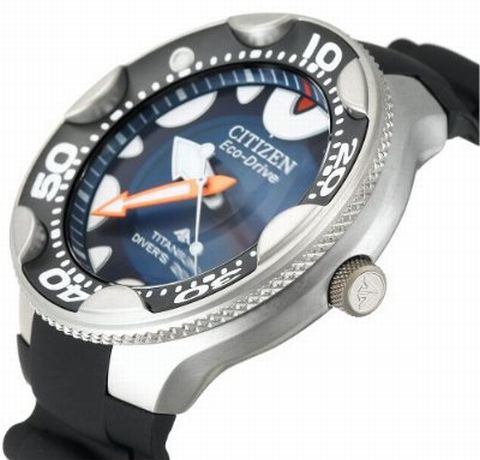
Also referred to as Orca, the BN0016-04L features a feather-light 45mm titanium case with an elaborately shaped unidirectional rotating bezel made of the same metal. However, its solid case back is made of stainless steel, which, counter-intuitively, may become subject to noticeable corrosion after exposure to salty seawater. Nevertheless, powered by Citizen’s iconic Eco-Drive Solar Quartz movement, this is a popular choice among enthusiasts who know how to care for this watch.
4. Seiko Prospex 200m Quartz Scuba 8F35 SBCM023: $250-$300
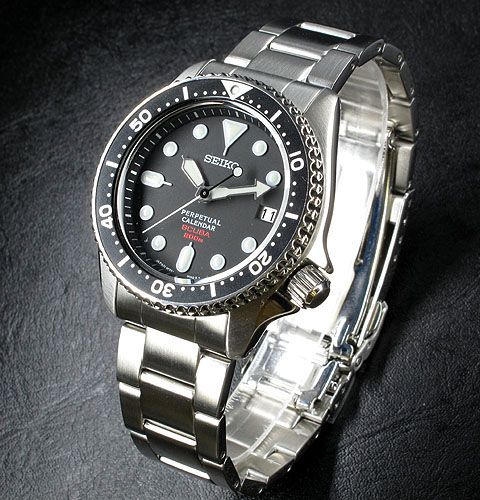
Sold as a JDM model, the SBCM023 is highly thought-after among enthusiasts.
The 39mm stainless steel case comes fitted with an SS strap equipped with a three-fold push type clasp. Of course, the SBCM023’s main point of attraction is its 8F35 quartz movement with perpetual calendar function. Being a diver, the Prospex 200m Quartz displays only the current date, not cluttering its rather small dial with the weekday, month, and year indicators. Theoretically, once properly set, the calendar will show the correct date until the year 2100. Of course, you will have to change batteries every eight years or so.
5. Citizen Promaster Automatic 200m NY0040-17LB: $130
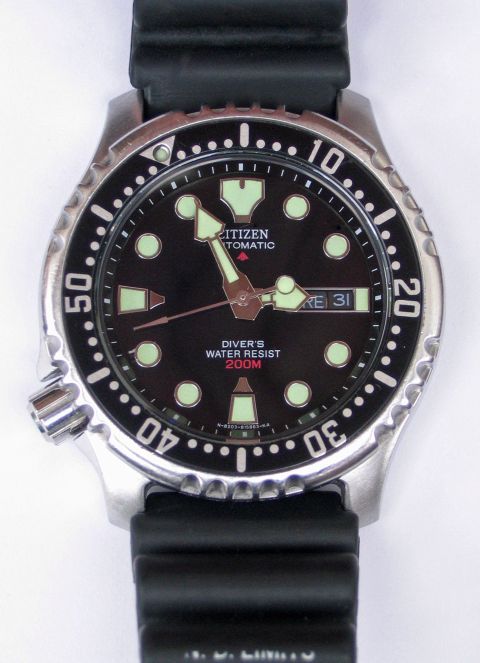
This one is also an interesting model. Already discontinued by the manufacturer, but still available on the Net at prices starting around $130, the Citizen Promaster is powered by the cal. 8203 self-winding movement. Accurate and reliable for its price range, the caliber is produced by Citizen’s subsidiary Miyota for decades.
As you can see in the photo above, the Promaster has a handy winding crown, which is located at 8 o’clock and, hence, is well protected against inevitable abuse. Promaster’s mineral glass is also less vulnerable to occasional bumps and scratches since the glass is positioned slightly lower than the unidirectional rotating bezel. Although not particularly handsome, its dial is informative and provides good reading both on the land and underwater.
6. Seiko Kinetic 200m SKA383P1: $300
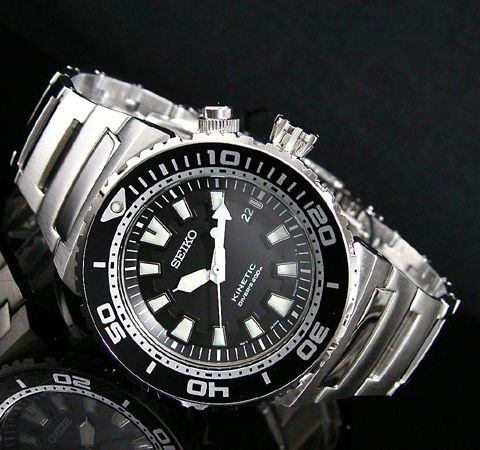
A masculine watch. Seiko’s iconic 5M62 Kinetic caliber, which is capable of storing enough power to keep the SKA383P1 going for approximately six months, is housed inside a gargantuan stainless steel case 46mm in diameter and 14mm in height. Its concave glass is made of Hardlex so that the risk of damaging the crystal is greatly reduced. Its classic-looking unidirectional bezel can be rotated in 120 clicks allowing you to set the desired time in half-minute increments.
The push-piece at 2 o’clock serves the single purpose of telling you how much juice is left in the energy storage department. Press it and the second hand will jump somewhere between the 12 and 6 o’clock marks. If it stays around 4 and 6 o’clock, then you have a power reserve from 4 to 6 months.
Positioned between 2 and 4 o’clock, the hand tells you that there is still enough energy to power the mechanism for 1-4 months. And if the seconds hand doesn’t go behind the 2 o’clock index, then all you have is around 10-30 days before the mechanism stops ticking. Very handy.
7. Seiko SKX781 Orange Monster Automatic 200m: $250
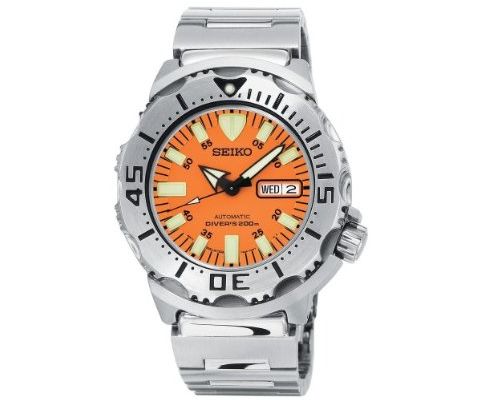
This diver is powered by a well-known 7S26 automatic movement, which is not particularly accurate (it doesn’t even have a hacking-second function that automatically puts the second hand at the 12 o’clock position and keeps it there until you stop adjusting the time,) but is nevertheless rugged and works for years without servicing. Quite impressive for an automatic, which can be obtained at a price hovering around $200-$250.
The caliber is protected from saltwater with a huge stainless steel case 42 mm in diameter (without crown) and 13 mm in height. The screw-down crown is located at 4 o’clock and is partly protected from occasional impacts with a pair of peculiar extensions on the lower part of the body. Like is the case with some other Seiko divers, the SKX781 Orange Monster features a slightly concave unidirectional rotating bezel that perfectly protects the Hardlex glass from scratches.
Remember, that the Monster is a serious tool that, together with the solid-steel bracelet, tips the scales at around 200 grams!
8. Orient Star Air Diver 200M WZ0351FD. $450
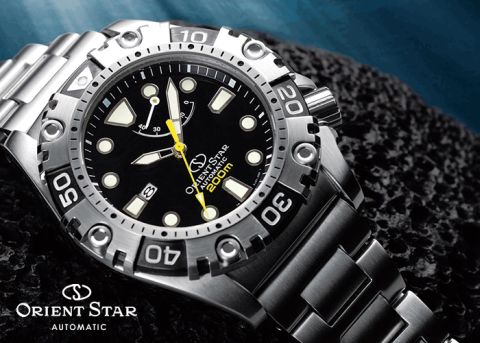
The Orient Star Air Diver 200M WZ0351FD is powered by the 46N4A automatic movement. Although sort of slow compared to modern ETA movements, this Japanese caliber has a good reputation for its adequate accuracy and reliability.
Like it is often the case with automatic divers, the WZ0351FD is large, although not as monstrous as its sister model rated for 300 meters. The rugged-looking 44mm case provides good protection for the crown, which is located at the 4 o’clock position, and its huge rotating bezel is nothing but fascinating when seen in real life.
Its solid-steel bracelet has a well-hidden extension for the wet suit. However, being almost 15mm in height, the Air Diver is not as comfortable to wear if you plan to limit its use at desk-diving.
Available at some Japanese and Singapore-based web stores at around $450, it is also relatively expensive.
9. Certina DS Action Chrono 200m Quartz: $550
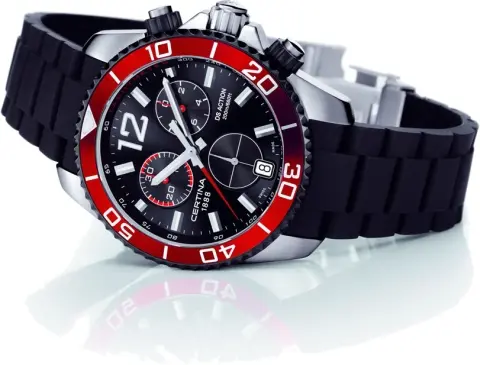
This model started selling back in 2009 and is powered by the Swiss ETA G10.211 quartz chronograph movement, which is known for its accuracy and reliability. Certina DS Action Chrono is a relatively expensive one. However, besides the obvious premium for the “Swiss Made” badge on its black dial, there is also a set of amenities you will not often see in Japanese quartz divers. Like, say, a scratch-resistant sapphire crystal with anti-reflective treatment.
The Action Chrono is available either on a black rubber strap or on a satin-finished stainless steel bracelet.
10. CX Swiss Military Argonaut 1000 TQ Quartz: $1500
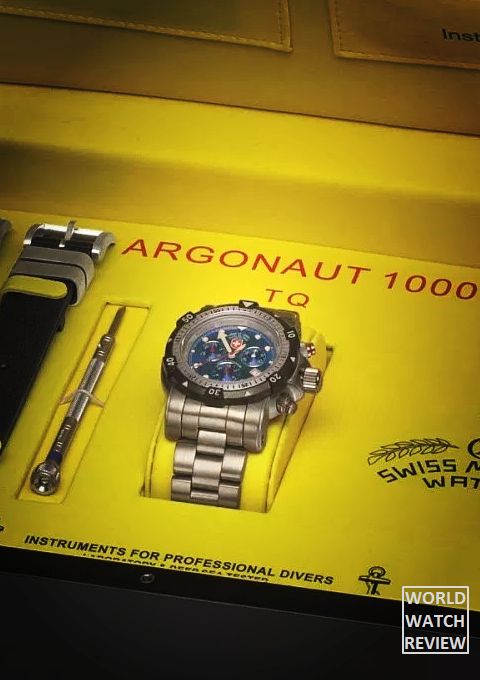
The gorgeous CX Swiss Military Argonaut 1000 TQ is not just any ordinary diver you can buy at the nearest jewelry store.
Hidden inside its heroically proportioned case (46 mm in diameter and 17 mm in height) is Ronda cal. 5030.D quartz chronograph movement. Equipped with a helium escape valve and a thick sapphire crystal, the titanium case is good to protect the movement for depths up to 1000 meters!
Its massive titanium bracelet is provided with a double safety folding clasp and an integrated extension for a wetsuit.
Nevertheless, the Argonaut is the most expensive in this Top-10 and it will take you some effort to find one on eBay since the watch was thrown to market at a limited lot of only 200 examples.
Well, here we go. The list that I compiled may look a little too biased for those who prefer Swiss-made models. However, I tried to make my judgment depending on the real virtues of respective models, such as dependability, accuracy, and the expected life span. If you still believe that the top-priced goods will give you the most satisfaction, the final choice is yours.
